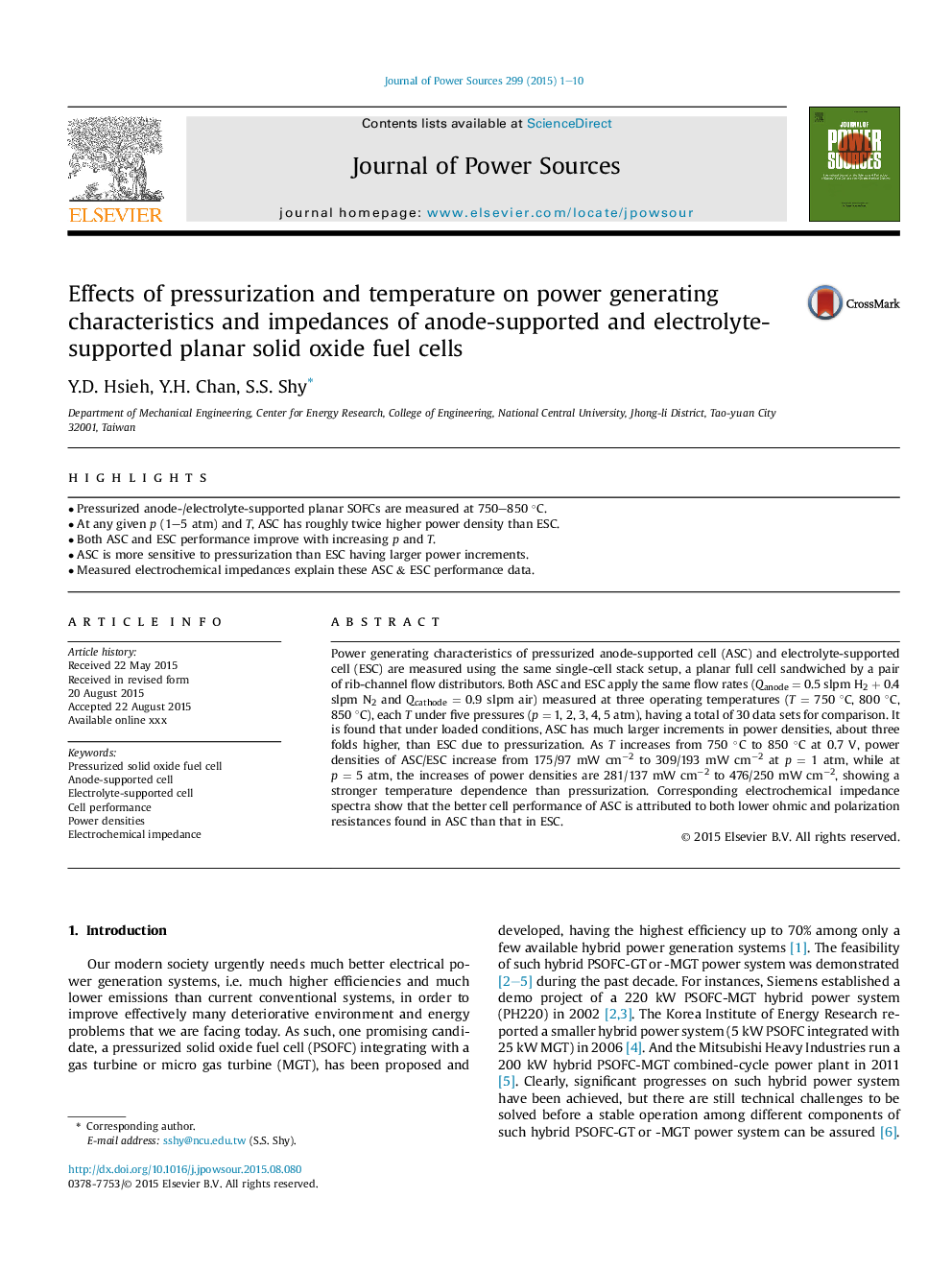| Article ID | Journal | Published Year | Pages | File Type |
|---|---|---|---|---|
| 7730092 | Journal of Power Sources | 2015 | 10 Pages |
Abstract
Power generating characteristics of pressurized anode-supported cell (ASC) and electrolyte-supported cell (ESC) are measured using the same single-cell stack setup, a planar full cell sandwiched by a pair of rib-channel flow distributors. Both ASC and ESC apply the same flow rates (Qanode = 0.5 slpm H2 + 0.4 slpm N2 and Qcathode = 0.9 slpm air) measured at three operating temperatures (T = 750 °C, 800 °C, 850 °C), each T under five pressures (p = 1, 2, 3, 4, 5 atm), having a total of 30 data sets for comparison. It is found that under loaded conditions, ASC has much larger increments in power densities, about three folds higher, than ESC due to pressurization. As T increases from 750 °C to 850 °C at 0.7 V, power densities of ASC/ESC increase from 175/97 mW cmâ2 to 309/193 mW cmâ2 at p = 1 atm, while at p = 5 atm, the increases of power densities are 281/137 mW cmâ2 to 476/250 mW cmâ2, showing a stronger temperature dependence than pressurization. Corresponding electrochemical impedance spectra show that the better cell performance of ASC is attributed to both lower ohmic and polarization resistances found in ASC than that in ESC.
Related Topics
Physical Sciences and Engineering
Chemistry
Electrochemistry
Authors
Y.D. Hsieh, Y.H. Chan, S.S. Shy,
